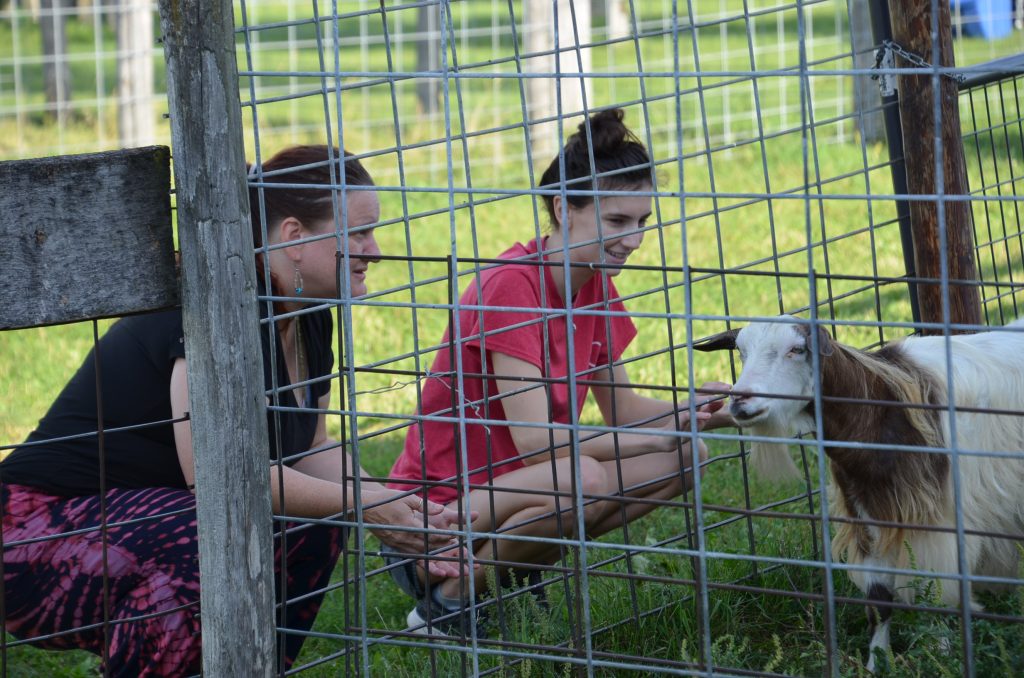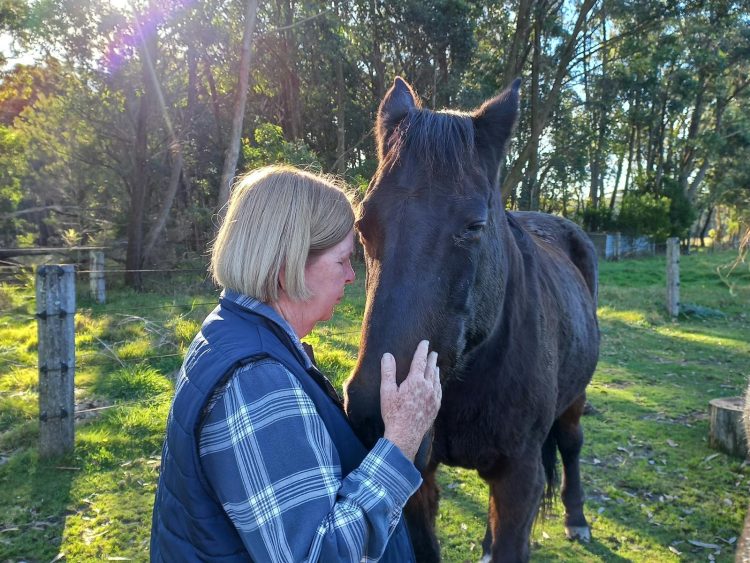In recent years, the wellness world has witnessed a heartwarming resurgence of animal-assisted healing as a method to nurture emotional harmony and mental wellbeing. Practices like animal reiki, equine therapy, and even dog yoga have blossomed beyond niche communities to mainstream acceptance, highlighting the profound impact that human-animal interactions can have on emotional health. This shift reflects a growing recognition of the innate bond between humans and animals, and how this connection taps into our biology to relieve stress, soothe anxiety, and promote feelings of safety and love.
At the core of these healing approaches lies a fascinating neurochemical mechanism involving oxytocin—often dubbed the “love hormone”—which facilitates bonding and stress reduction. Animal-assisted healing uniquely leverages this biology alongside tactile engagement and emotional presence to create a holistic therapy that is as gentle as it is powerful.
This article delves into the popular forms of animal-assisted healing—animal reiki, equine therapy, and dog yoga—exploring their origins, therapeutic benefits, and the science behind the oxytocin-stress relief connection. Through this lens, we can better understand why so many individuals are turning to animals as partners on their journey to emotional balance.
Animal Reiki: Energy Healing with Animal Companions
Reiki, a Japanese practice of energy healing developed in the early 20th century, focuses on channeling universal life energy to promote physical and emotional wellness. Animal reiki adapts this modality to the unique needs of animals and their human companions. Practitioners use gentle hand placements and mindful intention to support the energetic balance of the animal, which in turn fosters calm and healing for both the animal and the person involved.
Unlike traditional therapies that target symptoms, animal reiki emphasizes connection and presence, allowing animals to guide the session in ways that feel intuitive. Many participants report that the calming energy of the animals enhances their own emotional states, reducing anxiety and opening pathways for relaxation. This reciprocal healing underscores the deep empathic relationship between humans and animals.
While rigorous scientific studies on animal reiki remain limited, qualitative research and anecdotal evidence suggest that the practice can reduce cortisol levels—a primary stress hormone—in both animals and humans. The tactile and focused attention inherent in reiki sessions may help activate the parasympathetic nervous system, promoting rest and emotional regulation.
Equine Therapy: Healing Through Horses
Equine therapy, also known as equine-assisted psychotherapy (EAP), has gained prominence for its efficacy in treating trauma, anxiety, depression, and behavioral disorders. Rooted in the unique qualities of horses—such as their heightened sensitivity to human emotions and nonverbal communication—this therapy fosters emotional awareness and regulation through experiential interaction.
Horses’ size and presence encourage clients to confront fear and build trust, while their responsiveness mirrors the emotional states of the participants. Activities can include grooming, leading, and riding, each designed to cultivate mindfulness, assertiveness, and emotional resilience.
Research published in journals like Journal of Psychosocial Nursing and Mental Health Services and Anthrozoös supports equine therapy’s benefits, showing measurable improvements in PTSD symptoms, emotional regulation, and social skills. Notably, the therapy’s emphasis on nonverbal connection aligns well with clients who struggle to articulate their feelings, offering a somatic outlet for emotional expression.
The oxytocin surge experienced during positive human-horse interaction enhances bonding and lowers stress markers. This biochemical response, coupled with the calming physicality of horses, creates a unique therapeutic environment where emotional blockages can be gently addressed and transformed.
Dog Yoga: Combining Canine Companionship and Mindful Movement
Dog yoga, or “doga,” is an emerging trend that combines traditional yoga practices with the presence and participation of dogs. This practice creates a playful, compassionate space where humans and their canine friends engage in synchronized stretching, breathing, and relaxation exercises.
Doga encourages mindful movement and breath awareness while fostering a loving connection between owner and dog. The presence of dogs can reduce self-consciousness and enhance motivation, making yoga more accessible and emotionally supportive.
Scientific studies highlight that interaction with dogs increases oxytocin levels and decreases cortisol, creating a physiological environment conducive to stress relief and emotional wellbeing. The combination of physical activity, deep breathing, and affectionate interaction during doga sessions amplifies these effects, promoting relaxation and joy.
Beyond the physical benefits, doga nurtures emotional harmony by strengthening the human-animal bond, encouraging presence, and cultivating gratitude—qualities central to emotional resilience and mental health.
The Science of Oxytocin and Stress Relief in Animal-Assisted Healing
Oxytocin, a neuropeptide produced in the hypothalamus and released by the pituitary gland, plays a crucial role in social bonding, emotional regulation, and stress reduction. Its release is stimulated by touch, eye contact, and positive social interaction—features abundant in animal-assisted healing.
Numerous studies demonstrate that petting animals, especially dogs and horses, leads to measurable increases in oxytocin levels in both humans and animals. This biochemical exchange promotes feelings of safety, trust, and attachment, which counterbalance the activation of the sympathetic nervous system responsible for the “fight or flight” response.

High oxytocin levels inhibit cortisol secretion, reduce blood pressure, and lower heart rate, all of which contribute to a state of calm. This physiological effect helps explain why people feel comforted, grounded, and emotionally supported in the presence of animals.
Importantly, oxytocin also facilitates neuroplasticity, the brain’s capacity to adapt and rewire in response to experience. This means that animal-assisted healing not only provides immediate relief but may support long-term emotional transformation by encouraging healthier neural patterns.
Why Animal-Assisted Healing Resonates in Modern Life
In an era marked by digital overload, social isolation, and increasing mental health challenges, animal-assisted healing offers a deeply grounding antidote. Animals provide unconditional acceptance, nonjudgmental presence, and tactile comfort that many humans crave but struggle to find elsewhere.
The multisensory nature of animal interaction—touch, movement, sound, and gaze—engages the brain and body holistically, supporting emotional regulation in ways talk therapy alone may not achieve. Moreover, animals often model authenticity and mindfulness naturally, inspiring humans to embody these qualities.
For many, animal-assisted healing reintroduces a lost connection to nature and instinctual wellbeing, fostering a sense of harmony within oneself and with the broader environment. This integrative approach aligns well with holistic and trauma-informed care models gaining popularity.
Future Directions and Considerations
As animal-assisted healing grows, the field faces questions about standardization, animal welfare, and accessibility. Ensuring that animals involved are treated ethically and not overburdened is paramount. Additionally, practitioners are working to develop evidence-based protocols to maximize therapeutic outcomes.
Accessibility remains a challenge, as many animal-assisted programs require specialized facilities and trained professionals. Expanding community outreach and incorporating technology—such as virtual animal interactions or robotic companions—may help broaden access.
Research continues to deepen our understanding of the biopsychosocial mechanisms underpinning these therapies. As the science evolves, animal-assisted healing may become an integral complement to conventional mental health care.
Conclusion
People are turning to animal-assisted healing for emotional harmony because it uniquely marries ancient bonds with modern science, offering profound benefits through connection, compassion, and neurochemical magic. Practices like animal reiki, equine therapy, and dog yoga provide tangible pathways to reduce stress, heal trauma, and cultivate joy. The oxytocin-driven chemistry underlying these interactions validates the wisdom that animals can be powerful allies on the journey toward emotional balance. As we embrace this holistic approach, animal-assisted healing invites us to rediscover the healing potential within the shared heartbeat between species.











































